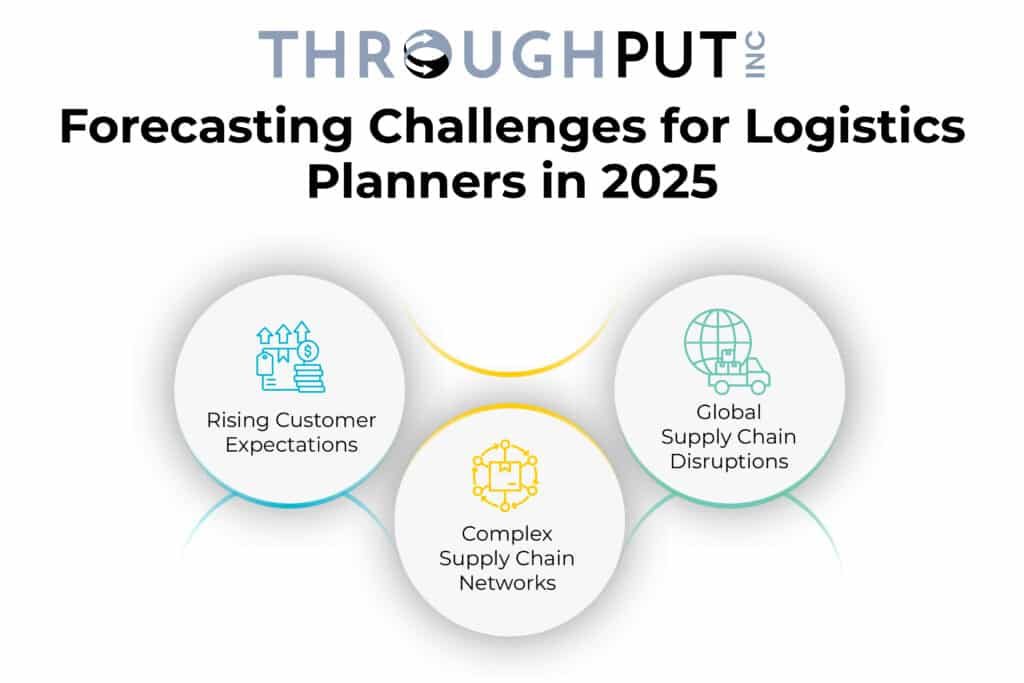Navigating Logistics Forecasting Challenges with a Demand-driven Approach

“Uncertainties” and “unknowns” in logistics forecasting and the logistics industry are like the predatory villains in Gotham City. You don’t know when they are going to strike you and how you can possibly deal with them.
As a result, the forecasting errors in logistics have only multiplied ever since the pandemic and with conventional forecasting models failing to insulate you against underutilization, revenue loss and missed business opportunities, you need to don the Batman’s cape to save the day! And in your case, this cape’s superpower is the demand-driven approach to logistics forecasting.
But right before we get into that, let’s understand what’s got your hands tied as a logistics planner.
Forecasting Challenges for Logistics Planners in 2025

- Rising Customer Expectations:
Your customers don’t care about the uncertainties and unknowns you’ve got to deal with. They want faster delivery, transparent tracking, and personalized experiences. Logistics planners must grapple with the challenge of meeting these heightened expectations while maintaining cost-efficiency and operational effectiveness. Unfortunately, most forecasting models lack the agility to be responsive to growing and changing customer expectations. - Complex Supply Chain Networks
Modern supply chains are intricate and involve multiple partners, geographies, and transportation modes. Coordinating these networks, managing interdependencies, and ensuring seamless flow pose significant challenges for logistics planners anyway. Now add to the mix, the possibility that an “unknown” can impact any part of your planning and have a ripple effect on your entire supply chain! Traditional forecasting models fail right at this point. - Global Supply Chain Disruptions:
The COVID-19 pandemic has highlighted the vulnerability of global supply chains. As a logistics planner, you must navigate known and “unknown” disruptions such as port congestion, driver shortages, and trade uncertainties, which impact transportation capacity, lead times, and overall logistics performance. A lot of forecasting models weren’t designed for some of the disruptions we’ve been seeing in recent times.
In short, traditional forecasting is not adept for the current environment we live in. What you need right now is a more mature and real-time forecasting model that can take into consideration multiple variables and moving parts, look at external data and also, navigate uncertainties with real-time visibility.
Demand-Driven Logistics Forecasting: Plan & Optimize Your Logistics for the “Knowns” & “Unknowns”
Demand-driven logistics forecasting is an approach that focuses on accurately predicting and meeting customer demand in the logistics and supply chain operations. Rather than relying solely on historical data, it takes into account current market conditions, customer behavior, and other factors that impact demand.
The greatest advantage of the demand-driven approach is that it accounts for sudden changes in customer demand and other market fluctuations unlike models that rely on past-year performance data alone.
This approach typically involves gathering data from various sources, such as point-of-sale systems, customer feedback, market research, and external factors like promotional activities or seasonal trends. Analytical techniques such as demand sensing are used to identify demand patterns, predict future demand, and make data-driven decisions.
What are the Benefits of Forecasting and Optimizing Logistics with Demand-Driven Insights
Demand-driven logistics planning ensures higher service levels by aligning inventory and transportation resources with actual customer demand, resulting in faster order fulfillment, reduced stockouts, and improved customer satisfaction.
By accurately forecasting demand, logistics teams can optimize inventory levels, minimize excess stock, and avoid costly rush orders. This leads to reduced carrying costs, lower transportation expenses, and improved overall cost efficiency .
Demand-driven logistics planning enables rapid response to changing market conditions, customer preferences, and unforeseen disruptions. This agility allows logistics teams to adjust transportation routes, inventory allocations, and replenishment strategies in real-time, ensuring optimal efficiency.
By aligning inventory levels with actual demand patterns, demand-driven logistics planning helps avoid overstocking or understocking situations. This optimization minimizes carrying costs, maximizes inventory turnover, and ensures the right products are available at the right place and time.
Demand-driven logistics planning promotes better collaboration among stakeholders, including suppliers, manufacturers, and distributors. By sharing real-time demand data, logistics teams can work together to synchronize supply chain activities, reduce lead times, and achieve operational excellence.
To summarize, Demand-driven Logistics Planning can help you in:
- increase order fulfillment rates
- Reduce logistics costs by up to 20%
- Reduce inventory by 7%-10%, and
- Improve on-time delivery performance by 5% – 10%.
Conclusion
In the logistics landscape of 2025, effective forecasting and optimization are paramount for logistics planners to succeed. By leveraging accurate demand forecasting, you can optimize inventory levels, increase inventory turnover, and meet customer demands efficiently.
With route optimization and resource allocation, you can minimize costs, improve delivery performance, and enhance customer service levels.
Embracing collaboration, communication, and advanced technologies further strengthens logistics operations, allowing for agile responses to market fluctuations and disruptions.
As you navigate the challenges of the modern era in logistics planning, investing in robust forecasting capabilities and optimization strategies will be key to unlocking efficiency, increasing OTIF performance, and exceeding customer expectations.
In short, you are the Batman of the logistics world and a demand-driven approach your cape!

